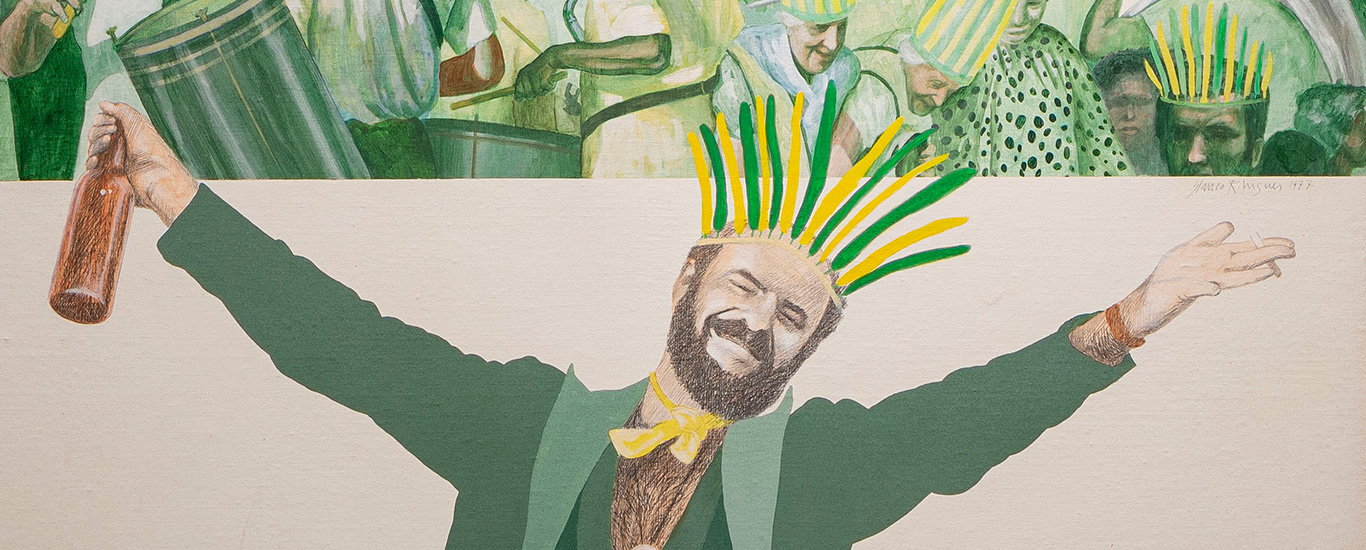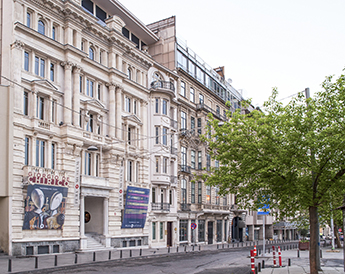The works of Glauco Rodrigues are grounded in the social unrest that engulfed Brazil in the wake of the 1964 military coup. His work – which has been dubbed as ‘critical Tropicalismo’ – appropriates and redeems clichéd images of Brazilian national identity. Mixing the historical facts of the European conquest and symbols taken from vernacular civilisations, Rodrigues’ Visão de Terra (Earth Vision) is a painting depicting a crowned male figure below a ritual procession of people playing drums and cymbals. The work might be interpreted as a depiction of political leadership and a subtle critique of white power.
Glauco Rodrigues (b. 1929, Bage, Brazil; d. 2004, Rio de Janeiro, Brazil) began painting in 1945 as an autodidact. After a brief period of training in Bage, he received a scholarship to attend the National Fine Arts School in Rio de Janeiro however he did not attend classes. Between 1951 and 1954 he founded and participated in several engraving collectives, where his aim was to express the rural character and traditions of southern Brazil, an objective that defined his practice. In 1958 he moved to Rio de Janeiro where he worked as a graphic designer, an illustrator and later as the director of the highbrow Senhor magazine. In the late 1950s, his works approached abstraction. In the early 1960s he returned to figuration and produced works under the impact of pop art, dealing with humor with national themes such as the Indian image, carnival, football, tropical nature and Brazilian history.
EXHIBITED WORKS
Visão da Terra, Lenda do Coati Puru que porventura é? [Earth Vision, Legend of the Coati Puru what is it?],1977
Acrylic on wood
105 × 86 cm (framed)
Courtesy Vincent Wierik.
Presented with the support of Consulate General of Brazil in Istanbul.








